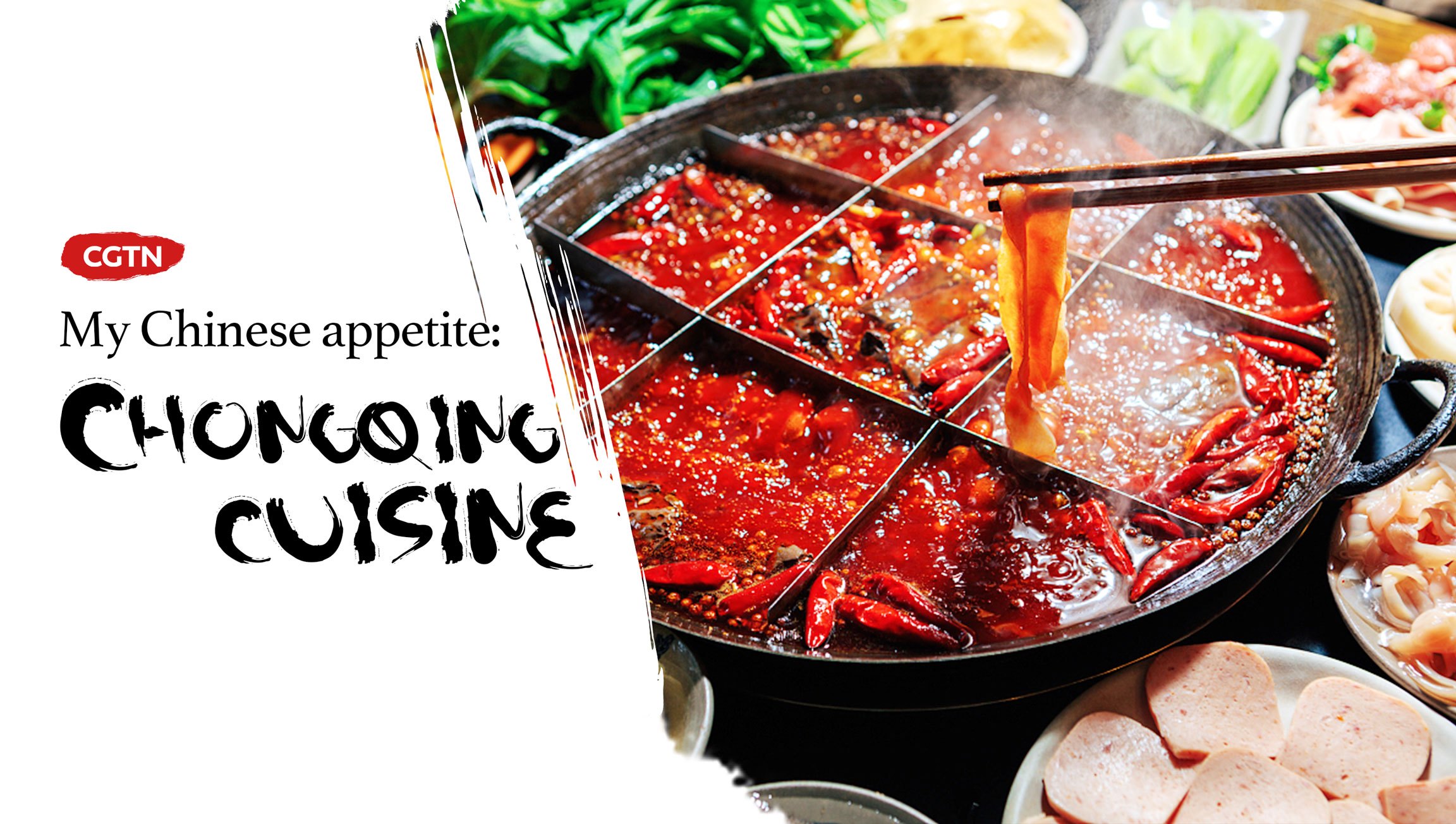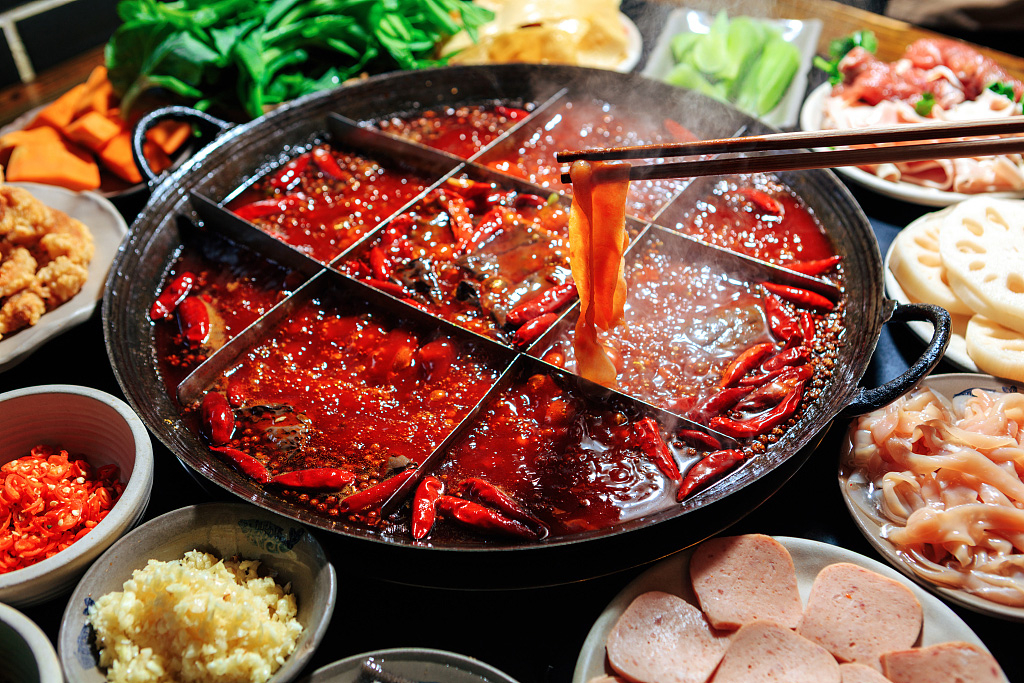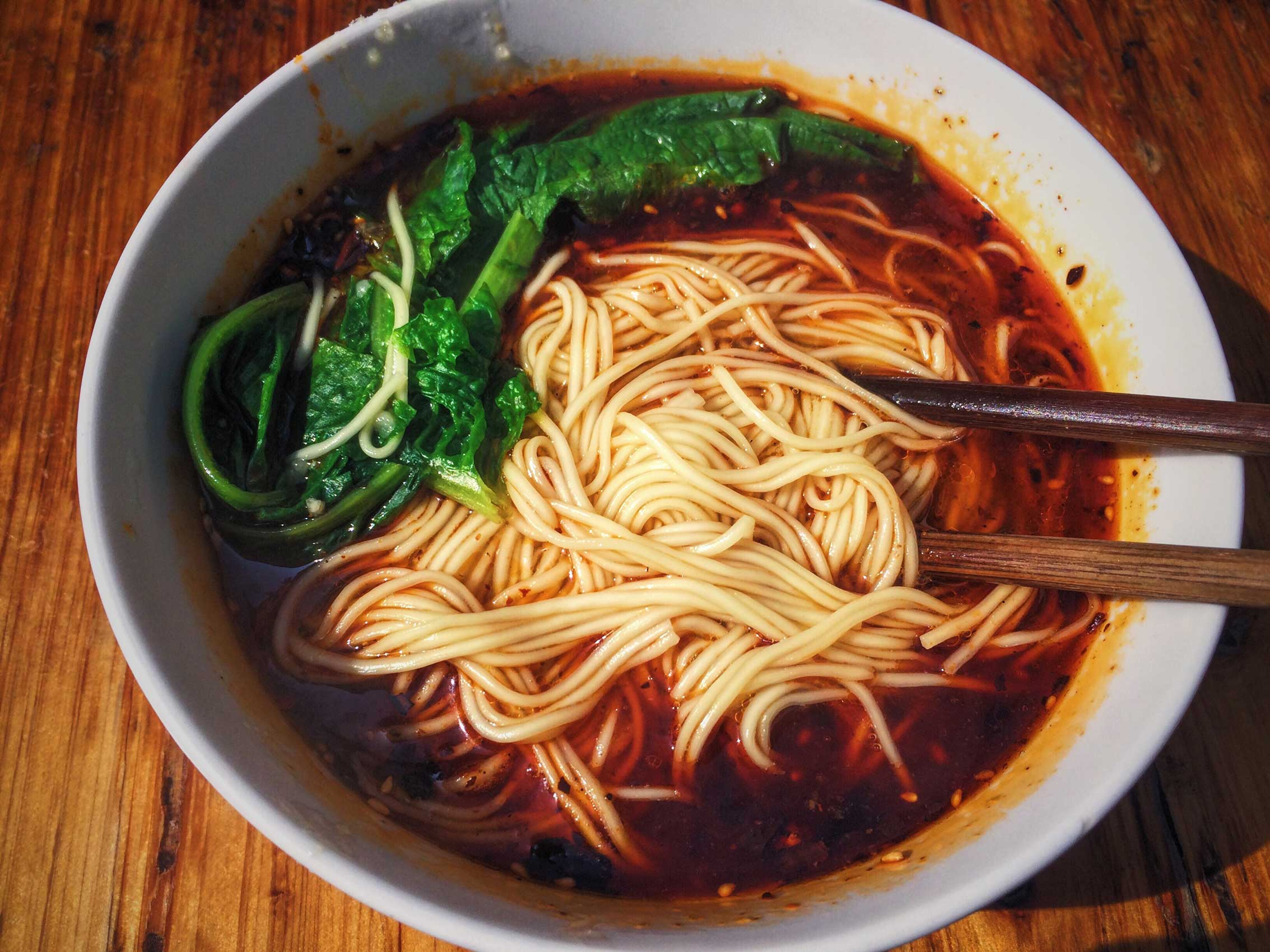
Flavor
20:59, 25-Apr-2019
My Chinese appetite: Chongqing Cuisine
Updated
15:26, 28-Apr-2019
Geng Siyuan

Chongqing Cuisine, also referred to as "Yu Cuisine," is known for its signature spicy flavor.
Popular in southwestern China, the food and flavors of Chongqing Cuisine share many similarities with Sichuan food, as Chongqing used to be part of Sichuan Province before 1997. The consistent humidity in Chongqing meant that cold lingers in the air during the winter. Local people started eating spicy food as a way of driving away the haunting cold.
Here, we share with you two kinds of staple food; but be careful, "I'm very hot!"
Chongqing hot pot

Chongqing hot pot. /VCG Photo
Chongqing hot pot. /VCG Photo
It is typically served in a pot split up into multiple square segments. These pots are called "jiu gong ge." "Jiu" means nine, "gong" palaces, and "ge" square spaces.
Hot pots became popular among manual laborers, who were unable to pay for large pots of food. Instead, they chose to share one large pot, but separated them into smaller sections to ensure each person's food didn't mix with other's.
The nine squares are still in place today, but their functions have changed. Most people put similar types of food into the same square. For example, the meats will be cooked together, and the vegetables in their own square.
Chongqing noodles
In 2016, drafted by the Chongqing Cuisine Association, “The guidebook for cooking Chongqing Noodles” was approved and put to practice.
The guidebook elaborated on terminologies, definitions, ingredients, cooking techniques and procedures, taste and look of the final product, as well the best temperature and time to eat this dish.
Here's a brief of the 14 ingredients and 18 steps from the book.

Chongqing noodles. /VCG Photo
Chongqing noodles. /VCG Photo
I. Preparation
Main ingredient: Noodles soaked in alkaline water when fermenting as flour. Standard: The noodles should not be too thin or think , nor wide or narrow. Texture should be chewy.
Other ingredients: Vegetables, soup, water, and oil. Standard: Selection of vegetables include pea sprouts, spinach, cabbage, Chinese cabbage, lettuce leaf and stem.
Condiments: Brewed soy sauce, ginger water, garlic water, oil with chili, MSG, vegetable oil, sesame, sesame paste, pepper powder, vinegar, peanut crunch, diced pickles and spring onions.
II. Steps
1. Examine the ingredients carefully. Make sure they are all fresh.
2. Overly raw ingredients, or their parts, should not be used.
3. Wash carefully.
4. Store washed ingredients in clean and separate spaces, and keep them from any chance of pollution.
5. Making soup: Boil raw pork, and clear away the seeped blood. Simmer the cooked ribs in clean water till it smells like soup. Keep it for later use.
6. Make the pork oil: Clean the pork and cut it into 2cm cubes. Simmer till oil leaks out completely. Put the oil into a container for later use.
7. Make the red oil: Clear the roots and seeds of juicy chilies with thick skins, preferably, and fry them with small amount of vegetable oil till they're cooked. Wait until it cools down, and smash the chilies. Fry new vegetable oil till it reaches 160 to 190 celsius degrees, and pour the hot oil into the container with the smashed chili. Stir while pouring the oil. It should eventually look red and shiny. Ration of fresh chili to oil is 1 to 2.5, 3 maximum.
8. Peel the ginger, crunch it, and add water. Ration is one portion of ginger to 3 times of water.
9. Garlic water is prepared exactly the same way as the ginger water.
10. Dry the pickles and cut them into cubes.
11. Cut spring onions into dices.
12. Deep fry peanuts, making sure they are crunchy for later use.
13. Fry sesame seeds (This is not the same item as the one below).
14. Sesame sauce: To evenly mix sesame oil with sesame paste, ratio is 1 portion of paste to 1.2-1.4 portion of paste.
15. Prepare pepper powder. Please be noted it is Sichuan, or Szechuan pepper. Take out the seeds and smash them into powder.
16. The condiments: Mix all the ingredients, fresh and cooked, evenly. Different people have different tastes; so feel free to create your own-flavored Chongqing noodles.
17. Cooking the noodles: Put cold water in a pot and boil. Put in the noodles. When they go up, put in cold water and wait till the it's boiled again. Put the noodles in a bowl and try not to take out much water.
18. Vegetables: Put washed vegetables into the boiling water and take everything out the second the vegetables are edible.
According to the guidebook, “After several times of experimenting, we've reached the conclusion that the best eating experience of Chongqing Noodles should start no later than two minutes after being cooked. The best temperatures for the noodles are from 65 to 75 degrees Celsius."

SITEMAP
Copyright © 2018 CGTN. Beijing ICP prepared NO.16065310-3
Copyright © 2018 CGTN. Beijing ICP prepared NO.16065310-3